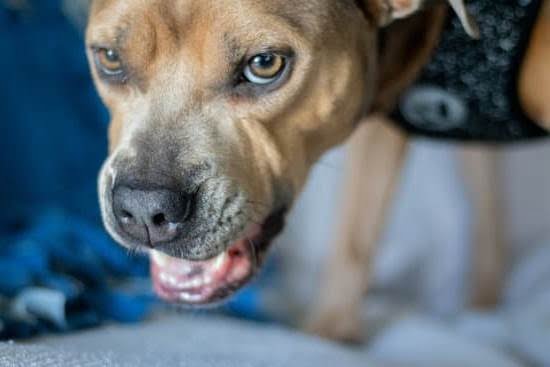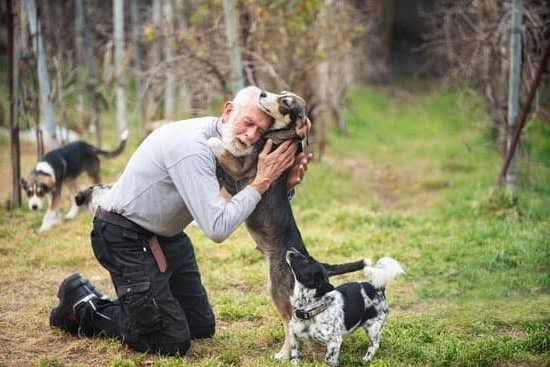Introduction
Training a dog to recognize its own name is a relatively simple process that will make your life with your pup much more pleasant. Dogs are incredibly intelligent and can learn anything we put in front of them with the proper training techniques. The key to successfully teaching your pup how to identify its name lies in consistency, patience, and positive reinforcement.
First, identify the word you will use for your dog’s name whenever you call out to him or her. It could be something like “Fido” or “Spot.” Whichever name you choose should be consistent so that your pup can easily remember it. Then, find a quiet area where distractions are minimal so that you can focus on training with no interruptions.
Second, call out the name when interacting with your pup and reward them when they respond correctly. If they don’t react right away, keep trying! Eventually they will associate their name with positive experiences like treats or praise every time they hear it. Consistency is key here, as occasionally missing an opportunity to reinforce the naming exercise can cause confusion further down the line.
Third, begin slowly incorporating other words that sound similar — such as “Fida,” “Spota,” etc.—so that your pup has a better chance of recognizing their own name amidst other similar words and phrases without getting confused along the way. Use treats or verbal praise more often than not to reward good behavior and acknowledge each successful recognition of their own name throughout this process too!
Finally, practice daily until it becomes second nature for your furry friend; it might take several weeks before recognizing their names becomes innate behavior but stay patient! With enough effort and positivity from both you and your pup during this period of time, soon enough he will be able to understand exactly when his name is being called by others as well as by yourself!
Benefits of Teaching a Dog Their Name
Teaching your dog their name has many benefits. First, it will give them a sense of identity in the household, making them feel more secure and connected to you. Second, it will help them comprehend orders and instructions more easily; for example, if you want your dog to stay, you can use their name along with verbal commands like ‘stay’ or ‘wait’. Lastly, once you have taught them their name they can become more responsive to other commands and develop better listening skills. Additionally, being able to call off leash dogs by their name can be of great importance when walking outdoors or during animal emergencies when your pup needs to be returned quickly.
Selection of the Right Name
Choosing the right name for your dog is an important step in teaching it to recognize its ownname. Selecting a short, one or two syllable name will make it easier for your dog to remember and recognize. Avoid names that are similar to common commands such as “sit” or “no,” which can confuse your pet and cause confusion. After you’ve chosen the name, always use the same one consistently when calling your pup. Make sure all members of the household use only one name for your dog when calling; this will help him learn his unique identifier quicker and prevent him from responding to multiple names.
Establish a Positive Reinforcement Training Program
When teaching a dog to recognize their name, it is important to implement a positive reinforcement training program. This means frequently rewarding the dog with treats and praises when they demonstrate the desired behavior. Consistency is key in order for the dog to learn and be successful. Start by repeating your pet’s name multiple times throughout the day and reward them with a treat or appropriate reward every time they acknowledge their name. Initially, you can use verbal rewards such as “good dog” followed by a special treat they enjoy. As your pet becomes more familiar with their name, replace verbal rewards with physical affection such as petting or belly rubs so that they become conditioned to receive love instead of food rewards. Additionally, it is important to use distractions such as toys or other people while you practice the command so that they can learn to not be distracted while responding. You should also avoid punishing or reprimanding your pet if they don’t respond immediately so that learning remains positive and enjoyable for them.
How to Properly Introduce Your Dog to Their Name
There are several steps that should be taken when introducing your dog to their name. The first step is to ensure that your pup is comfortable with the sound of their name. To do this, use a lot of positive reinforcement every time you call for them. This can include offering treats or verbal praises whenever you make eye contact and address your pup by name. You may also want to consider speaking loudly and with enthusiasm so your pup doesn’t become bored or confused when hearing the same word over and over.
The next step is to always use their name when giving rewards or punishments. If your pup does something naughty, calling its name will help it associate it with an undesired action. By using its name before rewarding acceptable behavior, your pup will understand how they should behave when being addressed by its own name. Again, make sure any products used are done in a positive way – emphasizing attention and praising when addressing them by name rather than using negative reinforcement tactics such as yelling or clapping hands – as this could lead the dog to become fearful instead of excited at being acknowledged.
Finally, one of the best ways to train a dog to recognize their own name is through consistency and repetition. As boring as it may sound, repeating the process day after day until eventually the pup comes running with enthusiasm every time its own name is heard means both of you get closer and closer together!
Setting Goals in Training
When you are training a dog to recognize their name, it is important to set goals that represent the desired outcome. Establishing the right objectives will lead to better results and a smoother learning process. Some objectives may include teaching your dog to come when called, respond when their name is mentioned, or recognize their name within two minutes of hearing it. It is important to gradually increase task difficulty as your pup learns, starting with basic attention commands like sit and stay before moving on to responding when called or recognizing their name. This process should be done in small increments with plenty of rewards and praise throughout! The ultimate goal is for your pup to become comfortable with you calling out their name and respond quickly and obediently each time. With practice and consistent reinforcement, the long-term result will be a well-trained pup that recognizes their name without fail!
Tips to Take Home
1. Repetition is key: When teaching a dog to recognize their name, use repetition. Every time you call the dog’s name, it should be accompanied by a reward or treat of some kind. This will create an association of hearing his name with something good, which will make him more likely to respond when called in the future.
2. Use Praise as a Reward: Instead of using treats every single time, feel free to use verbal praise when your pup comes after their name has been called out. Praise can motivate and help build trust between you and your pet just as effectively as treats!
3. Practice in Different Places: It’s important to practice training your pup to recognize its name in different places such as outside and indoors so that they can understand it no matter the situation they’re presented with at any given moment. To further reinforce this idea, mix up what kind of activities or experience you give them when calling out their name – for example, playtime or walking around the block should do the trick!
4. Continue to Reinforce: As with all things related to training, don’t shy away from reinforcing the lesson even after your dog has caught on – continue to use their name consistently and reward them each time they come after being summoned so that your pup doesn’t forget what you’ve taught them.
Frequently Asked Questions
Q: How often should I practice training my dog to recognize their name?
A: Regular and consistent practice is the key to success in teaching your dog to recognize their name. Aim for short, regular sessions of about 5-10 minutes for several days each week. It is important to stay consistent and reward your dog when they succeed so that they learn the desired behavior quickly.
Additional Training Techniques
Once your dog is responding to their name with a basic understanding, there are several additional techniques you can use to help them recognize their name with even greater accuracy.
One technique is to teach them the “look” command. Say your dog’s name followed by “look” and reward them when they make eye contact with you. Reward good behaviour whenever your dog engages in it, as this will reinforce their understanding of the situation. In addition, always be patient when training a recognition response to their name as dogs take time to learn new concepts.
You can also create an environment where they have multiple chances to practice recognizing their name. Ask family members or friends who are visiting to call out the dog’s name in different contexts, like during playtime or teaching a new trick and rewarding them for correct responses every time. Developing complex scenarios in which your pup must properly respond is key to reinforcing recognition capabilities.
Finally, when out in public it may be helpful to address your pup by adding descriptive words after their name (e.g., “Maxi! Come here!”). This will signal that someone is speaking directly to them and they should pay attention. With enough patience and encouragement you’ll find that your pup soon associates their unique identity with being addressed by name.
Step-by-Step Guide to Training a Dog to Recognize Their Name
1. Pick a training space: Identify a place where you will practice the name recognition exercise with your pup. This should be an area that is free from distractions, such as other animals or people, and has plenty of space for movement.
2. Give treats to reward progress: Having treats on hand to reward your dog will encourage them and motivate them to learn quickly and effectively. Choose treats that are small and easy for your pup to eat quickly (e.g. small cubes of cooked chicken).
3. Start off slowly: Begin by standing still with your pup in front of you and saying their name followed by the word ‘here’ in a clear tone of voice. When they come forward to meet you give them a treat, some praise, and/or affectionate petting. Repeat this until they recognize the pattern without being asked twice (e.g you say their name followed by ‘here’ and they come forward).
4. Advancing the training: Move around while repeating step three but require them to take one or two steps towards you before giving them their reward so each time they hear their name from further away they can understand that it means ‘come here’. Indoor or outdoor activities like fetching work well for taking the basic recall training outside of just standing in one spot recognising their name each time it’s said out loud to them from various different locations around them (as long as there are no distractions!).
5. Maintenance once complete: Once your pup begins following its name reliably wherever it is given, maintain accuracy by occasional spot-checks now & then – such as up & down hallways, indoors & outdoors etc – while also incorporating tricks & games like calling out specific commands like ‘sit’ once recognised to help make sure that it stays learnt longer term!
Overcoming Common Challenges
One of the most common challenges when training a dog to recognize their name is distraction. Dogs are naturally inquisitive and can easily be distracted by other animals or people during the training process. The best way to overcome this problem is by starting in an environment with few distractions. Choose a quiet place with limited noise, such as a backyard or living room, and reward your pup with treats and verbal praise when they respond correctly. Starting in an environment with fewer distractions will ensure that your pup has time to focus on what you’re teaching them.
Another challenge when trying to train a dog to recognize their name is consistency and repetition. Try not to use nicknames, as this can become confusing for your pup. Repeat their true name every time you call them so they start associating their true name with rewards, petting, and attention. This will help keep them focused on the task at hand and help prevent any confusion from arising. You should also always say their name cheerfully so they know it’s positive reinforcement rather than punishment or correction.
Examples of Success Stories
One success story can be found with Mary and her golden retriever, Max. Mary began to train Max by saying his name in different tones whenever she entered the house. In order for Max to make the association, she paired his name with a reward such as a treat or playing a game. Within a few days, Max was responding whenever he heard his name being called.
Another success story that is quite impressive is that of Laura and her two boxers, George and Gerry. Laura used positive reinforcement and repetition by always saying their names before giving them commands. After several weeks of training, both dogs could recognize their individual names even when they were across the room. She also mixed up phrases like “Gerry come here” or “George let’s go outside” to reinforce the connection between their name and specific instructions.
A third example comes from Jack who had two small breed dogs named Boomerang and Aloe Vera (named coincidentally after plants). He started by calling out each pup’s name individually while pointing at them to make sure they knew which dog he was calling for. As both dogs got better at responding he gradually increased the distance between them so that one day Boomerang would respond from one end of the yard while Aloe Vera responded from another end of the yard as soon as Jack called each one’s name out loud!
Conclusion
Training a dog to recognize its name is not a difficult task– it simply involves using positive reinforcement, repetition, and consistency. To train your pup, start by saying the command “Come” in a cheerful, loud tone. After repeating this phrase several times in bursts of one to two minutes, give your pup a reward when they come over to you. Make sure to remain consistent with rewarding them while calling their name and soon they’ll understand that coming over to you is associated with the name you give them. In addition to verbally offering rewards like treats, consider praising your pup with petting or playing as well. Along with this method, make sure to practice other commands like sit, stay and shake-a-paw which have previously been learned in order to reinforce the connection between the commands and their rewards. Once a reliable level of response has been achieved, gradually introduce distractions such as toys or tasks as these will test how well your pup focuses despite an exciting environment. Having ensured that your pup comprehends their name not only inside the home but also outdoors or among other pet animals is an essential component for having full control over your canine companion. With patience and constant motivation from both owners and family members utilizing similar techniques that are discussed above can help train any puppy into recognizing their own name.

Welcome to the blog! I am a professional dog trainer and have been working with dogs for many years. In this blog, I will be discussing various topics related to dog training, including tips, tricks, and advice. I hope you find this information helpful and informative. Thanks for reading!





